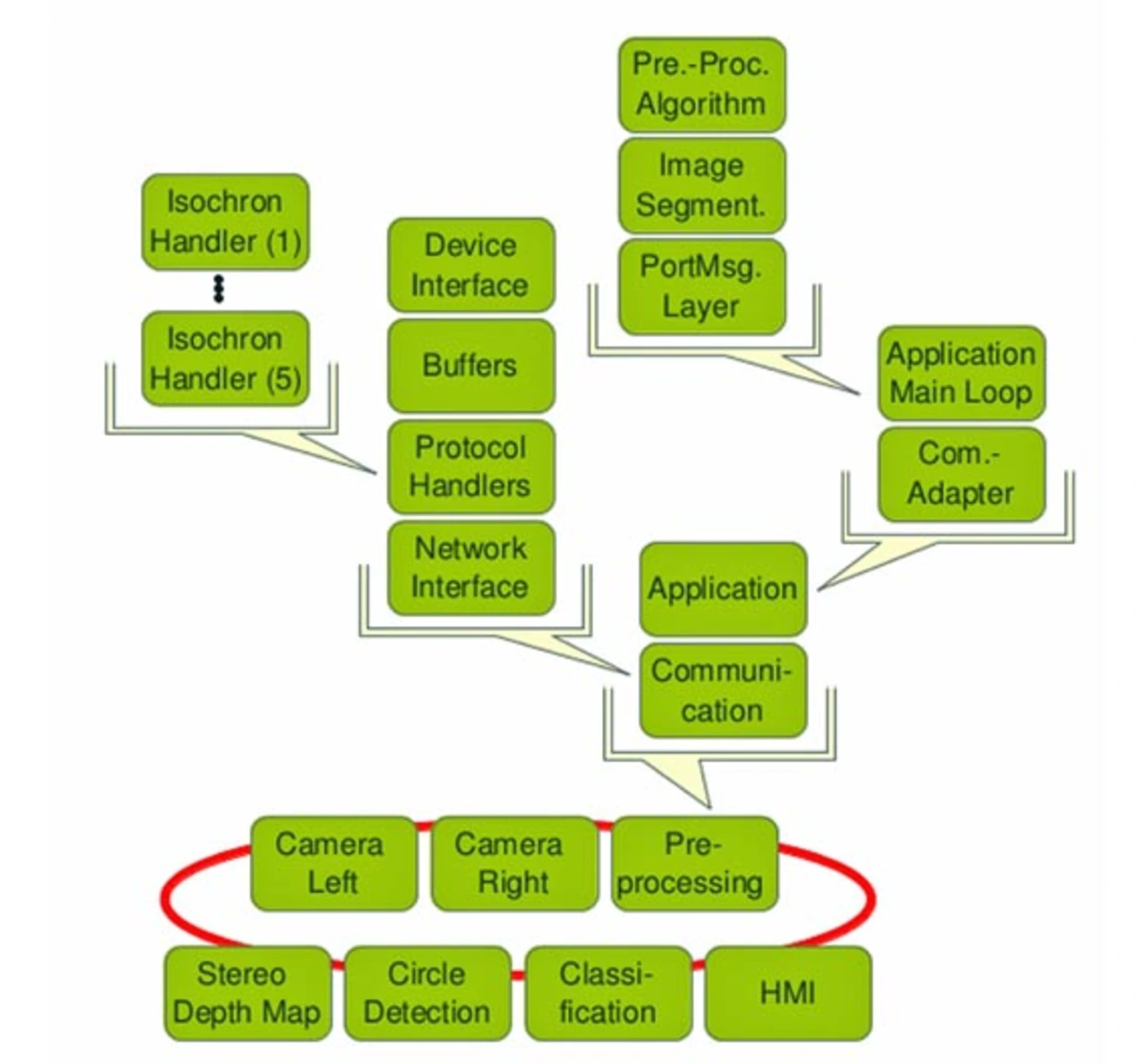MOST Network and System
Virtual Prototypes – Evaluation Framework for MOST-based ADAS
Fortsetzung des Artikels von Teil 1
Evaluation Framework – Use Case ADAS
The evaluation framework presented enables the functional and timing verification, performance and reliability analysis and supports design space exploration. Main focuses of the framework are modularity and a generic approach to enable the analysis of a variety of different system alternatives. Therefore, the virtual prototype-based framework is structured in a multitude of basic modules. These modules are aggregated to form the desired system; the ADAS use case scenario, for example, is assembled from around 150 module instances. An extract is shown in Figure 1. This allows an easy alteration of the system, such as changing the communication channel – by just replacing or extending the existing system using the appropriate modules. With this approach, it is possible to easily integrate new applications by using already existing IP components. The virtual system is configured using an .xml file, which allows easy assembly and configuration of the modules during runtime.
Jobangebote+ passend zum Thema

The distributed ADAS use case consists of two camera devices, a preprocessing module, a circle detection module, a speed sign classification module, a stereo depth map calculation module and a Human Machine Interface (HMI). The system contains two ADAS functions: the Stereo Depth Maps (SDM) and the Traffic Sign Recognition (TSR). The two systems share a common camera device and the image preprocessing module. The communication network has to forward the diverse image streams: the original camera images, the preprocessed images, clippings of the detected circles, the stereo depth map or the classified speed values. As per the role of a module, the demand on the underlying communication network differs. For instance, the preprocessing model requires a 1-to-n communication association to address multiple receivers. The camera image streams provide a continuous data stream; on the other hand, the clipped traffic signs appear in a burst-like manner. To reveal the impact of the communication technology, the camera streams of the stereo depth map application are analysed in detail.
- Virtual Prototypes – Evaluation Framework for MOST-based ADAS
- Evaluation Framework – Use Case ADAS
- Impact of communication technology on the application
- Optimization of system parameters
- Evaluation of packet channel sharing applications
- The authors
- The authors